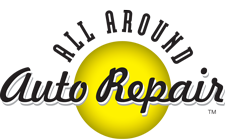Regular auto service and routine maintenance according to the manufacturer’s protocol is essential for getting the most mileage out of your vehicle and enjoying your new or used vehicle for years to come.
Subscribing to a regular maintenance schedule also ensures that you and your family stay safe because when you take your vehicle in for maintenance or servicing the mechanic will go through a comprehensive multi-point inspection for your vehicle’s brakes, engine, and transmission.
You can also expect for your vehicle to receive a wheel balance as well as oil and filter changes to keep your car on the road for longer, your family safer on the roads, and your vehicle performing as well as possible.
Tips for Getting the Most Out of Your Vehicle
Getting regular maintenance and servicing from an Automotive Service Excellence-trained technician is the first step towards ensuring a smooth ride and getting the maximum protection for your investment.
After ensuring you’re truly dealing with a professional, what questions should you be asking at the dealership?
1. Make Sure the Technician is Experienced
You might not automatically think of this one but many technicians – even ASE-certified ones – sometimes don’t have specific experience working on your make and model.
The cars out on the roads today are leap years ahead of vehicles from just a generation ago, and it’s important that the technician and dealership keep abreast of those changes as they occur.
So, you should really be on the lookout for a technician who has experience working on Honda vehicles in general and, ideally, both experience and training working on your specific Honda’s make and model.
That’s really the only way to guarantee that the technician working on your vehicle has the know-how, training, tools, and parts to get down to work and provide the kind of maintenance and servicing that your Honda deserves.
2. Ask About Labor Costs Upfront
Aside from great financing and competitive trade-in offers, Manly Honda offers complimentary maintenance on many of its in-warranty vehicles.
When you’re using an unfamiliar mechanic or if your vehicle is out of warranty, make sure to ask about the labor costs upfront. Most places will actually be pretty forthcoming about this and list their prices upfront.
Just make sure that you find out whether the technicians are being paid by the amount of time they spend on your vehicle or the job itself (i.e., a fixed price for a specific kind of vehicle servicing).
3. Keep a Record of Your Servicing History
This is an especially crucial tip if you’re stuck on the side of the road or if you bring your vehicle into another mechanic’s shop who may be unfamiliar with your vehicle and its service history.
You want to keep documentation of your vehicle’s recent maintenance history and lifetime service history in the glove compartment of your vehicle, or at least within easy access.
Having a complete, documented record of all the work that’s been done on your vehicle ensures that you and the technician aren’t fixing the same problem twice or applying the wrong fix to the problem.
In other words, keeping a clear record of your vehicle’s servicing and maintenance makes the technician’s job that much easier and can greatly facilitate the technician’s work should s/he need to do some troubleshooting or make a diagnosis of the vehicle issue.
4. Get Original Parts Whenever Possible
You should really go out of your way to request Honda original equipment manufacturer (OEM) parts to be installed, ideally, by an ASE-backed technician. That’s a great way to guarantee that you protect your Honda investment far into the future so contact us today.
Why Seasonal Maintenance Matters More Than You Think
Seasonal maintenance is often overlooked but plays a huge role in extending your vehicle’s life. Think about it—your car faces entirely different challenges in summer versus winter. For instance, during hot months, your cooling system works overtime, while winter demands more from your battery and tires. Addressing these seasonal changes can help prevent unexpected breakdowns. For example, studies show that failing to prepare your car for cold weather increases battery failure risks by up to 30%. Taking small steps like checking antifreeze levels or switching to winter tires can make a world of difference.
Don’t Ignore the Little Noises
Ever notice a strange noise and think, “It’s probably nothing”? Well, ignoring those little sounds could cost you big later. Squealing brakes might mean worn-out pads, while a humming sound could signal a wheel bearing issue. Addressing these small warning signs during routine maintenance can save you thousands in repairs down the road. A quick diagnostic check during your regular service can pinpoint problems before they escalate, ensuring your car stays in peak condition.
Maximize Fuel Efficiency with Proactive Care
Regular maintenance doesn’t just keep your car running—it keeps your wallet happy too. Did you know that a clogged air filter can reduce your fuel efficiency by up to 10%? That’s like paying for gas you never even use! Simple fixes, such as replacing air filters and ensuring proper tire pressure, can stretch your mileage significantly. Plus, staying on top of oil changes keeps your engine running smoothly, reducing wear and tear and maximizing every drop of fuel.




